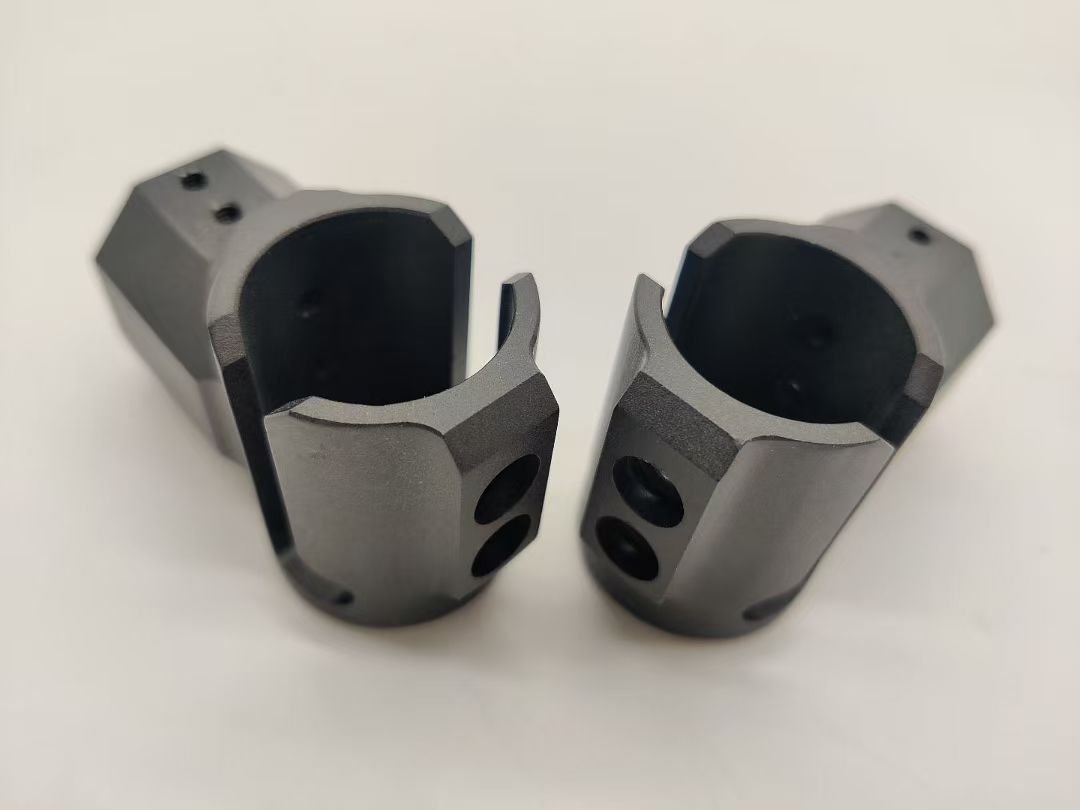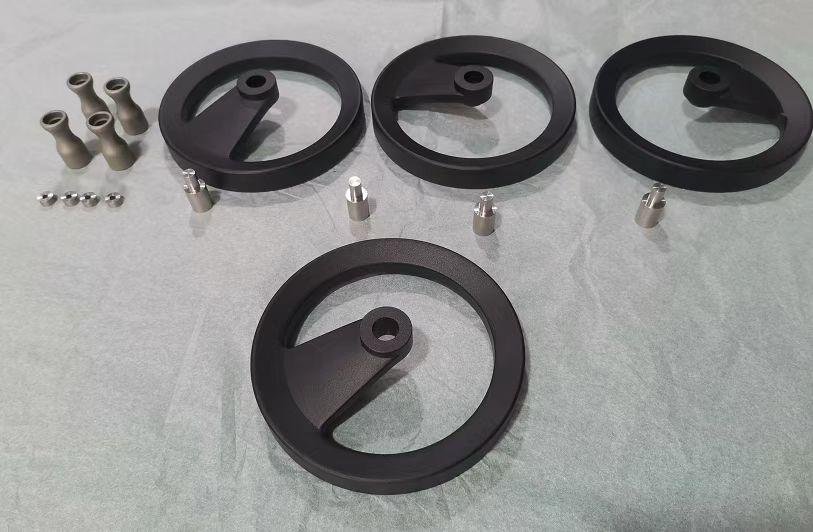Anodizing aluminum is a superior finishing process that enhances both the appearance and durability of CNC machined parts. At CNCRUSH, we specialize in CNC machining services, including CNC Milled parts and CNC Turned parts, ensuring top-tier quality for industries such as automotive, machine building, and automation. This article explores why anodizing aluminum is the ultimate choice for CNC parts and why partnering with an experienced China CNC factory like CNCRUSH makes a difference.

1. What is Anodizing Aluminum and Why is it Essential for CNC Parts?
Anodizing aluminum involves an electrochemical process that converts the metal’s surface into a highly durable, corrosion-resistant finish. This makes it a preferred method for CNC machining services, particularly for industries demanding precision and longevity, such as automotive and aerospace. Anodizing not only improves the metal’s wear resistance but also provides a surface that can be dyed in various colors, making it aesthetically versatile for different applications. CNC Milled parts and CNC Turned parts benefit significantly from this process, as it enhances both their functional and visual properties.
2. The Science Behind Anodizing Aluminum
Anodizing works by creating a controlled oxide layer on the aluminum surface through an electrochemical process. During anodizing, the aluminum part is immersed in an electrolyte solution, usually sulfuric acid, while an electrical current is applied. This current causes oxygen ions to bond with the aluminum atoms, forming an oxide layer that is much harder and more resistant than the natural oxidation of aluminum. This enhanced oxide layer not only provides corrosion resistance but also serves as an excellent base for dyes and secondary coatings, improving both the durability and appearance of CNC parts.
3. Advantages of Anodizing Aluminum for CNC Parts

Anodizing offers numerous benefits that make it ideal for CNC machined parts:
- Durability: The anodized layer is extremely hard and protects CNC Milled parts and CNC Turned parts from corrosion, wear, and oxidation.
- Aesthetic Appeal: Anodizing offers a variety of color options, making it ideal for applications where appearance matters, such as in consumer electronics and automotive interiors.
- Enhanced Adhesion: The porous nature of the anodized layer allows paints, adhesives, and additional coatings to bond more effectively.
- Environmentally Friendly: The anodizing process is non-toxic and produces minimal waste compared to other finishing techniques.
4. Types of Anodizing for CNC Machined Aluminum Parts
Anodizing can be divided into three primary types, each suited for different applications:
- Type I (Chromic Acid Anodizing): Produces a thin, grayish finish mainly used for aerospace components requiring minimal dimensional change.
- Type II (Sulfuric Acid Anodizing): Offers a thicker oxide layer and is commonly used for decorative purposes, offering a wide range of colors and moderate corrosion resistance.
- Type III (Hard Anodizing): Produces a very thick and hard oxide layer, ideal for parts subjected to extreme wear conditions, such as automotive and industrial components.
5. How Anodizing Aluminum Benefits CNC Machining Services

Anodizing adds significant value to CNC machined parts by improving their mechanical and visual properties:
- Increased Hardness: Essential for CNC Turned parts in automation where durability is critical.
- Corrosion Protection: Essential for CNC Milled parts in outdoor applications and automotive systems.
- Consistency: Ensures uniform finishes across large production batches, which is vital for precision CNC machining services.
6. Factors to Consider Before Anodizing Aluminum CNC Parts
Before anodizing, several factors need to be evaluated to achieve optimal results:
- Material Selection: Alloys such as 6061 and 7075 aluminum are ideal for anodizing due to their higher purity levels.
- Surface Preparation: Proper cleaning and pre-treatment steps, such as bead blasting or polishing, ensure a uniform finish.
- Coating Thickness: Depending on the anodizing type, the coating thickness varies, which can influence the final dimensions of CNC Milled parts and CNC Turned parts.
7. Common Applications of Anodized CNC Aluminum Parts
Anodized aluminum parts are widely used across various industries due to their durability and visual appeal:
- Aerospace Components: Lightweight yet durable, meeting strict safety standards.
- Automotive Parts: Enhanced resistance to environmental stress and long-term wear.
- Consumer Electronics: Premium aesthetics and scratch-resistant surfaces.
- Machine Building: CNC Turned parts with anodizing ensure long-lasting performance in industrial equipment.
8. Anodizing vs. Other Aluminum Finishing Techniques
| Finish Type | Durability | Corrosion Resistance | Cost Efficiency |
|---|---|---|---|
| Anodizing | High | Excellent | Moderate |
| Powder Coating | Medium | Good | High |
| Polishing | Low | Low | Low |
| Painting | Medium | Moderate | Medium |
9. Why Choose CNCRUSH for CNC Machining Services with Anodizing?
CNCRUSH stands out as a leading provider of CNC machining services, offering over 12 years of experience in CNC Milled parts and CNC Turned parts with anodized finishes. Our capabilities include:
- State-of-the-Art Equipment: Equipped with advanced CNC milling and turning machines for precision work.
- Expert Team: Skilled technicians ensuring high-quality finishes.
- Customized Solutions: Tailored CNC machining services for automotive, machine building, and automation sectors.
- Quality Control: Rigorous inspection standards, including CMM and height gauges, to ensure dimensional accuracy.
10. FAQ: Anodizing Aluminum in CNC Machining
Q1: What is the typical lead time for anodizing CNC aluminum parts? A1: Lead times generally range from 5-7 days, depending on part complexity and production volume.
Q2: Can all aluminum grades be anodized? A2: No, certain alloys like 6061 and 7075 are better suited for anodizing, while others may not produce consistent results.
Q3: How does anodizing impact dimensional tolerances? A3: Anodizing can add a thin oxide layer, typically up to 50 microns, which may require adjustments to CNC machining tolerances.
Conclusion
For premium CNC machining Anodizing Aluminum services and expertly anodized CNC Milled parts and CNC Turned parts, trust CNCRUSH. With over 12 years of experience serving industries like automotive, machine building, and automation, we deliver exceptional quality and precision. Contact us today to explore our comprehensive CNC solutions tailored to your project needs.
